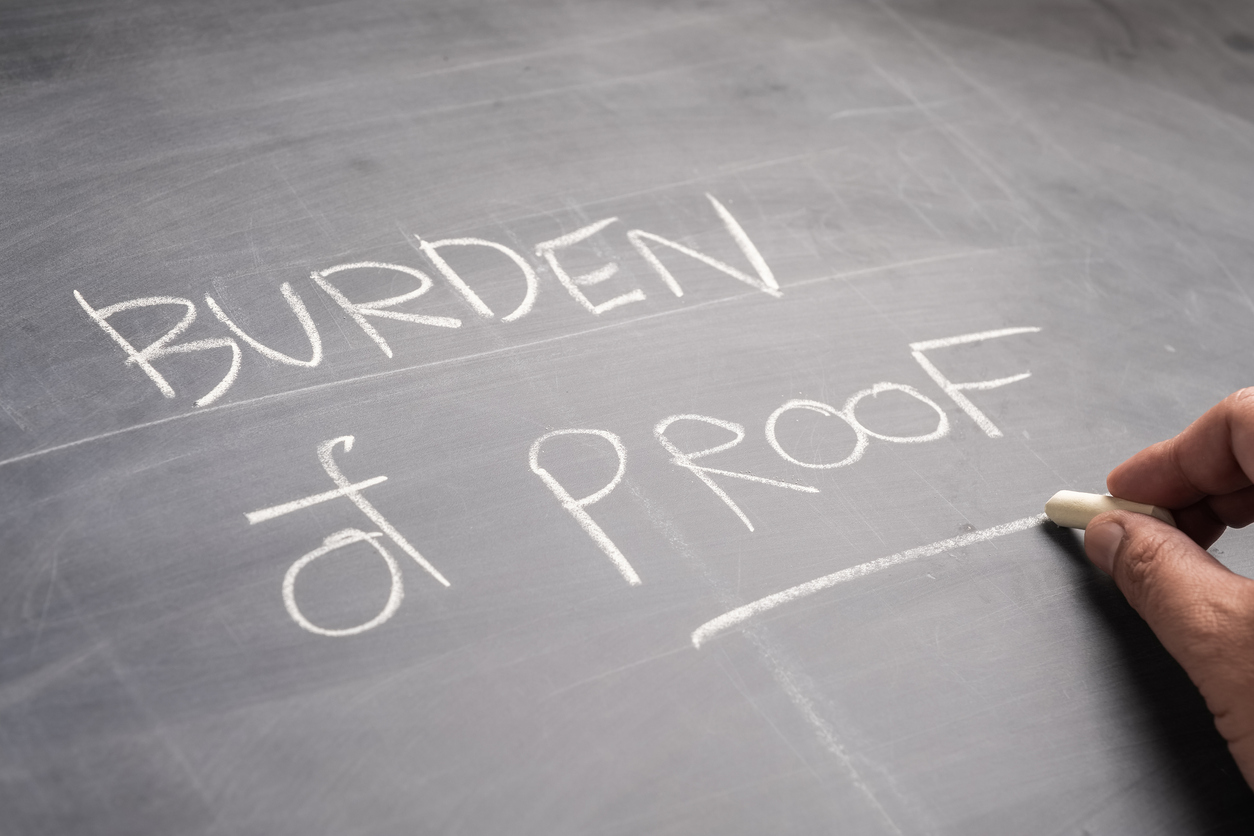In every state of the Union except one, all risk insurance policies have the common rule that the insurance company must prove the excluded cause of loss. There is a reason why Texas has the word “lone” when being described as the “Lone Star State.” A recent hail damage case with fairly common facts in the hail-prone areas of Texas is one that should be read carefully by Texas policyholders and public adjusters.1 Here are the facts:
Landmark’s policy with Insurance covered damage to Landmark’s commercial property, but only for damage that commenced during the policy period, which began on February 4, 2020. The policy included coverage for hail and wind damage but no coverage for rain damage to the property’s interior unless the rain entered the building through damage caused by a covered event. After a storm on May 7, 2020, Landmark filed a claim with Insurance, requesting that Insurance provide coverage for damage to Landmark’s building, which Landmark alleged had been caused by the storm.
Approximately six weeks after the storm, Insurance sent a contract field adjuster to inspect the property, and that adjuster reported no signs of hail damage on the property’s roofing materials. Sonny ‘Cal’ Spoon, a public adjuster with InsuranceBusters.net, which had been hired by Landmark, inspected the property at the same time. Spoon concluded that the property had suffered hail damage, and he estimated the cost of repairs to Landmark’s property at $1,300,633.58. Insurance then retained an engineer, Jarrod Burns, who did find some hail damage, particularly to some mechanical units on the roof, but he determined that the damage had been caused before the policy took effect. Insurance denied the claim.
Landmark then sued Insurance for failing to provide coverage. Landmark retained several experts in connection with its suit. One of those experts was Jeffrey Leach, an engineer, who inspected the property on June 5, 2022, and unlike Insurance’s engineer, Leach found hail damage on the property’s roof.
This is a common claims scenario in hail-prone areas because hailstorms of various degrees will re-occur. To be clear, in all states, the policyholder must first prove that damage happened during the policy period. Once damage is proven, the burden, except in Texas, is shifted to the insurance company to prove that the cause of the damage is excluded. Texas, when faced with “concurrent causes of loss,” places the burden on the policyholder to prove that the exclusion does not apply despite Texas Code 554.002, which provides:
Sec. 554.002. BURDEN OF PROOF AND PLEADING. In a suit to recover under an insurance or health maintenance organization contract, the insurer or health maintenance organization has the burden of proof as to any avoidance or affirmative defense that the Texas Rules of Civil Procedure require to be affirmatively pleaded. Language of exclusion in the contract or an exception to coverage claimed by the insurer or health maintenance organization constitutes an avoidance or an affirmative defense.
This blog has written about the unique Texas exclusionary rules of property insurance law in Texas Judges Need to Recognize That Insurance Companies Have to Prove Exclusions: Dispelling the Myths of Insurance Texas All Risk Coverage Burdens, and Who has the Burden of Proof Regarding Damages in Texas?
The insurer then moved for summary judgment based on the unique Texas concept of concurrent causation:
Insurance filed a traditional motion for summary judgment based on the concurrent causation doctrine, which applies ‘when covered and excluded events combine to cause an insured’s loss.’ Dillon Gage Inc. of Dall. v. Certain Underwriters at Lloyds Subscribing to Policy No. EE1701590, 636 S.W.3d 640, 645 (Tex. 2021). ‘[W]hen a covered event and an excluded event ‘each independently cause’ the loss, ‘separate and independent causation’ exists, ‘and the insurer must provide coverage.’ ‘ (quoting JAW The Pointe v. Lexington Ins., 460 S.W.3d 597, 608 (Tex. 2019)). But if both covered and uncovered events combine to cause a loss, and “[the] covered and uncovered events are inseparable, then causation is concurrent, the insurance policy’s exclusion applies, and the insurer owes no coverage for the loss.’
Insurance’s summary judgment motion observed that for Landmark to prove its contract claim at trial, it would have to prove that Insurance had failed to provide coverage that the policy obligated Insurance to provide. Insurance’s motion addressed this part of Landmark’s contract claim. Specifically, Insurance argued that its evidence showed that the May 2020 storm was not the sole cause of property damage and that there was no way to show what part of the damage had been caused by that storm or other covered events. It contended that because the evidence showed that the property damage had multiple, inseparable causes, some of which were not covered by the policy—and thus the evidence showed that the policy did not require Insurance to provide coverage—the evidence demonstrated as a matter of law that Insurance had not breached the contract by failing to provide coverage.
The court recited how it believes Texas rule is to be followed, which places an extra burden on policyholders not found in other states:
The doctrine of concurrent causation relates to this principle. Because an insurer has no obligation to pay for damage caused by an event not covered under the policy, if covered and non-covered events combine to cause the damage, the insured must segregate between the damage attributable to the covered event and the damage attributable to other causes. Prime Time, 630 S.W.3d at 230; Farmers Grp. Ins., Inc. v. Poteet, 434 S.W.3d 316, 326 (Tex. App.—Fort Worth 2014, pet. denied). When concurrent causation applies, an insured’s ‘[f]ailure to segregate covered and non-covered perils is fatal to recovery.’ Tex. Windstorm Ins. Ass’n. v. Dickinson I.S.D., 561 S.W.3d 263, 273 (Tex. App.—Houston [14th Dist.] 2018, pets. denied). Thus, Landmark would have to show at trial one of three circumstances: (1) that the damage had only one cause, which was covered by the policy; (2) that the damage had multiple independent causes, one of which was covered; or (3) although covered and non-covered events combined to cause the damage, Landmark had segregated between the covered damage and non-covered damage.…
…
In this case, Insurance likewise raised the issue of concurrent causation, and Landmark had the burden to show that the damage for which it sought coverage resulted from the May 2020 storm or another covered event. Accordingly, if Insurance’s summary judgment evidence established as a matter of law that segregation was impossible, Insurance was entitled to judgment unless Landmark responded with evidence raising a fact issue.
The practical effect in Texas hail damage cases is that the expert for the policyholder normally has to be able to segregate the amount of damage from the covered hail damage versus the amount of damage that is excluded.
The other practical impact of this rule is for the insurance company to retain its usual cast of engineers to find all kinds of prior hail events occurring at the property. Those cast of engineers then opine that it is impossible to separate that damage from those prior events from the recent hail event. In other states, the same cast of insurance company engineers mysteriously explain how they can tell that the damage is older so they can prove the excluded loss. But, the Texas insurance defense bar has their usual cast of engineers thinking straight on how this plays out in Texas.
In this case, the biggest problem for the policyholder is that its expert stated that he was not hired as a hail causation expert and could not say how much damage occurred before the 2020 storm. Without being able to segregate the damage from the recent storm, he stated, “It is my opinion that the cumulative effect of [previously-]reported storms in combination with the storm on May 7, 2020, has damaged the roof and allowed water to enter the building.” Not being able to segregate the losses can be fatal under Texas’ unique exclusionary rules.
The court ruled for the insurance company:
In summary, Leach could not say when the storm damage he saw had occurred. He could not rule out the May 2020 storm as a cause of damage, but he also could not rule out any previous storm or any storm that had occurred in the two years between the May 2020 storm and his inspection in 2022. He provided no guidance that could be used by a factfinder in estimating when the hail or wind damage had occurred. To the contrary, his testimony indicated that there was no way to make that kind of determination.
Because Insurance’s summary judgment evidence established that any damage caused by the May 2020 storm could not be segregated from the damage caused by previous storms that were not covered, Insurance demonstrated that it had no obligation to pay under the policy, thereby negating Landmark’s breach-of-contract claim….
….
None of Landmark’s evidence contained information about segregating between covered and non-covered damage or even raised the possibility that segregation could be done. To the contrary, even under Landmark’s evidence, the covered and non-covered causes of property damage could not be separated. Further, Landmark’s summary judgment evidence did not establish that covered and non-covered events each independently caused the damage to its building. See Dillon Gage, 636 S.W.3d at 645 (stating that concurrent causes doctrine does not apply when a loss is independently caused by both a covered and a non-covered event); see also Guar. Nat. Ins. Co. v. N. River Ins. Co., 909 F.2d 133, 137 (5th Cir. 1990) (applying Texas law to hold that hospital’s failure to maintain security of its windows and its failure to properly observe its patient were independent causes of the patient’s death by suicide). Accordingly, the concurrent causation doctrine applied and, under the evidence, was fatal to Landmark’s claim.
I am not trying to make Texas policyholders and public adjusters into lawyers. But this scenario is very common in Texas because the insurance company experts have become masters at finding all kinds of damage and causes of damage not related to a recent event that did cause damage. The “get out of jail” card for the insurance company in Texas is to broadly use this unique concurrent cause rule. When faced with these issues, it is imperative that the policyholder and public adjuster do a full investigation, looking for all evidence regarding the cause of loss and hiring a causation engineer.
Thought For The Day
Things don’t correct themselves, you’ve got to go out there and work hard to correct them.
—Tom Brady
____________________________




